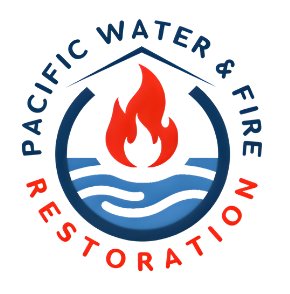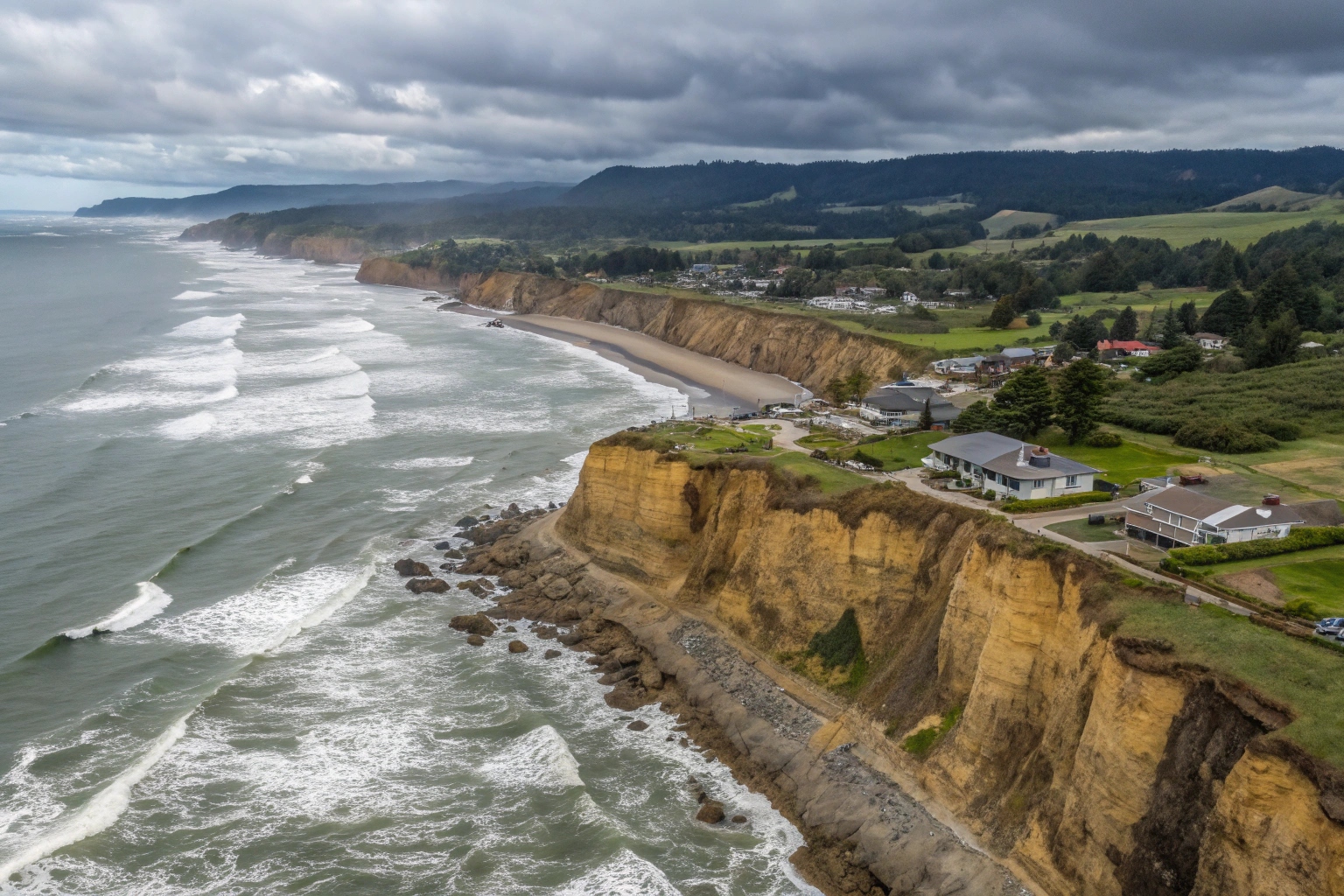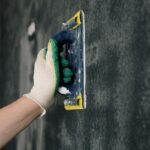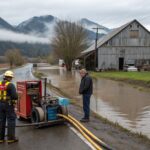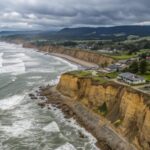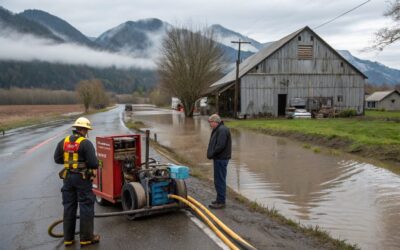For Newport residents and property owners, the breathtaking views of the Pacific Ocean come with significant challenges. Nestled between Yaquina Bay and the open ocean, Newport faces ongoing battles with coastal erosion and storm surge events that threaten homes, businesses, and infrastructure. At Pacific Water & Fire Restoration, we’ve worked with many coastal property owners to recover from water damage and implement preventive measures. This experience has given us valuable insights into Newport’s unique coastal challenges and the most effective approaches to protecting properties in this dynamic environment.
Understanding Newport’s Coastal Vulnerability
Newport’s geographic position and geological features create specific vulnerabilities to erosion and storm surge that residents should understand to better protect their properties.
Newport’s Unique Coastal Geography
Newport’s 4.6 miles of coastline features varying geological formations that respond differently to erosion and storm events:
- Nye Beach area: Characterized by sandstone bluffs vulnerable to undercutting
- Agate Beach: Features a low-lying profile susceptible to storm surge
- South Beach: Protected somewhat by the Yaquina Bay jetties but subject to changing sand patterns
- Yaquina Bay properties: Vulnerable to combined effects of high tides and storm surge
According to the Oregon Department of Geology and Mineral Industries (DOGAMI), portions of Newport’s coastline are eroding at rates of 6-18 inches per year on average, with significantly higher rates during major storm events.
Critical Weather Patterns and Seasonal Risks
Newport experiences several weather patterns that accelerate erosion and increase storm surge risk:
- Winter king tides: Extremely high tides that occur between November and February
- Pacific storms: Most frequent and intense from October through March
- El Niño conditions: Associated with higher sea levels and more intense storm activity
- Combined events: When storms coincide with high tides, creating particularly damaging conditions
Local Context: The winter of 2015-2016 saw some of Newport’s most significant erosion in recent history, with several properties along Nye Beach experiencing critical bluff retreat during a series of powerful storms combined with king tides.
Notable Erosion and Storm Surge Events
Several major events have shaped Newport’s approach to coastal hazards:
- January 2012 Storm: Caused significant erosion at Nye Beach and damaged the seawall
- December 2015 Events: Resulted in substantial bluff retreat and property damage
- January 2018 King Tides: Combined with strong storms to cause extensive flooding in bayfront areas
- January 2020 Storm Surge: Flooded portions of the Bayfront and damaged several businesses
Property Risk Assessment: Identifying Vulnerabilities
For Newport property owners, understanding specific vulnerabilities is the first step toward effective protection.
Location-Based Vulnerability Factors
Different Newport neighborhoods face distinct challenges:
Nye Beach Area Properties
- Primary risks: Bluff erosion, undercutting of foundations
- Warning signs: Cracks in yard, leaning trees, appearance of springs on bluff face
- Monitoring needs: Bluff edge distance, drainage patterns, vegetation changes
Bayfront Properties
- Primary risks: Storm surge, tidal flooding, wave impact
- Warning signs: Increasing frequency of minor flooding, water stains on foundations
- Monitoring needs: Flood pathways, tide charts, storm forecasts
South Beach Area
- Primary risks: Sand movement patterns, dune erosion
- Warning signs: Decreasing beach width, exposed previously buried materials
- Monitoring needs: Dune stability, beach profiles, storm forecasts
Pro Tip: Newport property owners can request a Coastal Hazard Assessment from the Oregon Department of Land Conservation and Development. This free service provides customized information about your property’s specific risks.
Structural Vulnerability Assessment
Beyond location, building design and condition significantly impact vulnerability:
- Foundation type: Slab, pier, or basement foundations each face different risks
- Building age: Older structures may lack modern moisture barriers and drainage systems
- Previous damage: Past water intrusion can compromise structural elements
- Drainage systems: Inadequate or damaged systems increase vulnerability
- Protective features: Presence or absence of seawalls, riprap, or other barriers
Local Resource: The City of Newport Building Department offers free consultations on erosion risk factors for coastal properties. Contact them at (541) 574-0627 to schedule an assessment.
Preventive Strategies: Protecting Your Newport Property
Implementing proactive measures can significantly reduce erosion and storm surge impacts on coastal properties.
Drainage Management: The First Line of Defense
Proper water management is critical for bluff stability and foundation protection:
- Surface drainage: Direct water away from bluff edges and foundations
- French drains: Intercept groundwater before it reaches vulnerable areas
- Rain gardens: Create natural collection areas away from vulnerable zones
- Downspout extensions: Ensure roof runoff is directed well away from foundations
- Permeable surfaces: Reduce runoff volume by allowing water infiltration where appropriate
Important Note: Improper drainage is a leading factor in accelerated bluff erosion. In Newport’s environment, even seemingly minor drainage issues can lead to significant property damage over time.
Vegetation Strategies for Erosion Control
Native plants play a crucial role in stabilizing Newport’s coastal environments:
- Deep-rooted native species: Shore pine, salal, and beach strawberry help bind soil
- Dune grass: Essential for stabilizing sandy areas
- Layered vegetation: Combines groundcovers, shrubs, and trees for comprehensive root networks
- Strategic placement: Focuses on vulnerable areas while maintaining views
- Maintenance considerations: Ensures long-term effectiveness through proper care
Pro Tip: The Lincoln County Soil and Water Conservation District offers free consultations and sometimes cost-sharing for erosion control planting projects in Newport. Contact them at (541) 265-2631.
Structural Protection Approaches
For properties facing significant risks, engineered solutions may be necessary:
- Seawalls: Vertical barriers designed to withstand wave action
- Riprap: Large, angular stones placed to absorb wave energy
- Retaining walls: Structures designed to hold back eroding slopes
- Foundation reinforcement: Strengthening existing foundations to withstand undermining
- Building elevation: Raising structures above potential flood levels
Important Consideration: Hard structures like seawalls and riprap require permits from multiple agencies, including the Oregon Department of State Lands and the U.S. Army Corps of Engineers. Some areas of Newport have restrictions on new hard structures.
Storm Preparation: When Severe Weather Threatens
When major storms approach Newport, these preparation steps can help minimize property damage.
Pre-Storm Property Protection
Before severe weather arrives:
- Secure outdoor items: Move or anchor furniture, equipment, and decoration
- Install storm barriers: Deploy temporary flood barriers at entryways if appropriate
- Clear drainage systems: Ensure gutters, drains, and ditches are free of debris
- Document property condition: Take dated photos for potential insurance claims
- Review emergency shutoff procedures: Know how to quickly cut power and water if needed
Creating a Storm Response Plan
Develop a clear action plan that includes:
- Safety thresholds: Conditions under which you’ll evacuate or take shelter
- Communication protocols: How family members will stay in contact
- Emergency contacts: Key numbers including utilities, emergency services, and restoration professionals
- Evacuation routes: Multiple pathways to reach higher ground or inland areas
- Recovery priorities: What to address first if your property sustains damage
Local Resource: Newport Emergency Management offers free customizable storm preparation templates for coastal residents. These can be obtained at City Hall or downloaded from the city website.
After the Storm: Assessment and Recovery
When severe weather subsides, proper assessment and prompt action are crucial to prevent additional damage.
Safety-First Assessment
Before beginning cleanup or repairs:
- Structural stability: Look for shifted foundations, new cracks, or leaning walls
- Electrical hazards: Check for water exposure to wiring or electrical systems
- Gas leaks: Be alert for gas odors and report them immediately
- Water contamination: Assume floodwater contains hazardous materials
- Erosion damage: Identify any new erosion that might threaten structures
Safety Warning: If storm surge or erosion has compromised your property’s structural integrity, do not enter until a qualified professional has assessed the safety. Contact Newport Building Department for emergency inspections after major storms.
Documenting Damage for Insurance
Thorough documentation supports insurance claims:
- Photograph everything: Capture all visible damage from multiple angles
- Video documentation: Record walking tours of affected areas
- Written inventory: List damaged items and structural components
- Maintenance records: Provide evidence of pre-storm condition
- Retention of samples: Keep small samples of damaged materials
Important Note: Many standard homeowner’s policies have limitations or exclusions for coastal erosion damage. Review your coverage and consider specialized policies if needed.
Professional Restoration After Storm Damage
When Newport properties experience storm surge or erosion damage, professional restoration provides comprehensive recovery.
When to Call Professionals
Professional restoration is particularly important for:
- Structural concerns: When erosion or water has affected foundations or support elements
- Saltwater intrusion: Which requires specialized cleaning and treatment
- Extensive water infiltration: Affecting multiple rooms or levels
- Contaminated water exposure: Requiring sanitization protocols
- Hidden moisture issues: Requiring specialized detection equipment
Pro Tip: At Pacific Water & Fire Restoration, our IICRC-certified technicians use thermal imaging and moisture meters to detect hidden water that visual inspection might miss. This is particularly important in Newport’s coastal environment, where salt-laden moisture can cause ongoing corrosion and mold issues if not properly addressed.
The Professional Restoration Process
For storm-damaged properties, restoration typically includes:
- Comprehensive assessment: Evaluating both visible and hidden damage
- Water extraction: Removing standing water with specialized equipment
- Saltwater mitigation: Addressing the corrosive effects of seawater
- Structural drying: Using industrial dehumidifiers and air movers
- Sanitization: Addressing contaminants in floodwater
- Mold prevention: Applying treatments to prevent fungal growth
- Deodorization: Eliminating storm-related odors
- Restoration: Repairing or replacing damaged materials
Important Distinction: Storm surge damage presents unique challenges compared to typical water damage. The salt content accelerates corrosion, and the force of water often creates structural issues that require expert assessment.
Long-Term Resilience: Building Stronger for Newport’s Future
Beyond immediate recovery, Newport property owners should consider long-term resilience strategies.
Climate-Adaptive Building Approaches
As Newport faces changing coastal conditions, adaptive approaches include:
- Flexible design: Structures that can be modified as conditions change
- Sacrificial elements: Features designed to be damaged while protecting core structures
- Modular components: Building elements that can be easily replaced after damage
- Flood-resistant materials: Using salt-resistant, quick-drying materials in vulnerable areas
- Strategic retreats: In some cases, relocating structures farther from eroding bluffs
Community Resources and Support
Newport has developed several resources to help property owners address coastal challenges:
- Newport Coastal Hazards Working Group: Coordinates community-wide approaches
- Oregon Sea Grant: Provides educational materials and technical assistance
- Northwest Association of Coastal Engineers: Offers referrals to qualified professionals
- Oregon Shores Conservation Coalition: Advocates for sustainable coastal management
- Oregon Coast Alliance: Provides information on coastal protection regulations
Conclusion: Thriving on Newport’s Dynamic Coast
Living between sea and sky in Newport means embracing both the beauty and challenges of this dynamic coastal environment. While erosion and storm surge present significant risks, informed preparation, appropriate protective measures, and professional restoration when needed allow residents to enjoy coastal living with greater security and peace of mind.
At Pacific Water & Fire Restoration, we understand the unique challenges Newport properties face from coastal hazards. Our experience with saltwater damage, erosion-related structural issues, and the specific building practices of coastal Oregon properties makes us a valuable partner in both preparation and recovery.
The key to successful coastal property management lies in the balance between preventive measures, proper emergency response, and professional restoration when needed. By combining community resources, individual preparation, and professional expertise, Newport residents can continue to enjoy one of Oregon’s most beautiful coastal communities for generations to come.
Need Storm Damage Restoration or Want to Prepare Better?
If you’re dealing with water damage from coastal storms or want to schedule a preventive assessment of your property’s vulnerabilities, our team of IICRC-certified restoration professionals is available 24/7.
For emergency service: Call 503-201-7337
For preventive assessments: Schedule a free consultation to identify and address potential vulnerabilities to water intrusion and erosion.
Remember, when it comes to coastal property protection in Newport, preparation is your best defense, but should your property suffer damage, professional restoration is your best path to complete recovery.
Pacific Water & Fire Restoration is a full-service property restoration company serving Portland and coastal communities including Newport. Our IICRC-certified technicians are available 24/7 for emergency water extraction, structural drying, and complete restoration services for both residential and commercial properties.
